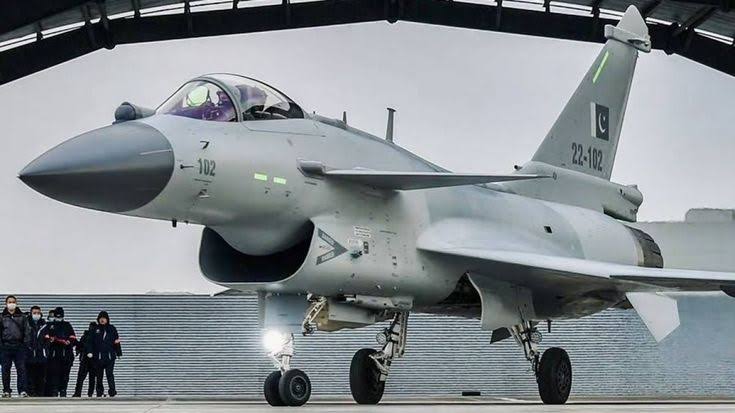Pakistan’s Use of Chinese Jets in Combat with India Sends Shockwaves Through Global Defense Circles

Islamabad, The Gulf Observer: A recent four-day military confrontation between India and Pakistan has drawn international attention not just for its intensity, but for what analysts are calling a milestone in modern air combat — the first large-scale deployment of Chinese-made fighter jets and missiles in actual warfare against Western counterparts, according to The Economist.
During the high-stakes aerial battle on May 7, which reportedly involved 114 aircraft and lasted over an hour — all conducted beyond visual range (BVR) — Pakistan claims that its Chinese J-10C fighters, armed with PL-15 air-to-air missiles, shot down five Indian fighter jets, including three French Rafales and two older Russian models.
India has neither confirmed nor denied the losses, stating only that “all pilots are safe” and asserting that it destroyed some “high-tech” Pakistani aircraft — a claim Islamabad disputes, reporting only minor damage to one jet.
If verified, this would mark the first combat loss of a Rafale, a development with far-reaching implications for global arms buyers and defense strategists. Until now, Chinese military aircraft like the J-10C were untested in real combat and widely believed to be technologically inferior to Western aircraft.
China, Pakistan’s long-time defense partner and its largest arms supplier, has remained officially tight-lipped. However, China Space News, a state-run defense outlet, reported on May 12 that Pakistan used an advanced networked targeting system, in which air defenses locked on to enemy aircraft, allowing missiles to be launched from other platforms. While the report did not name Chinese hardware explicitly, Pakistan does operate Chinese air-defense systems and airborne radar aircraft, some of which India claims to have jammed during the encounter.
The confrontation has sparked renewed scrutiny of India’s military preparedness, despite its modernization drive over the last decade that included the purchase of 62 Rafale jets, with more under consideration. In contrast, Pakistan has rapidly expanded its Chinese-made fleet, acquiring 150 JF-17 fighters (jointly produced with China) and 20 J-10Cs since 2022.
Geopolitical ramifications are significant. China itself operates J-10Cs, notably around Taiwan, and military planners in the United States and its allies are now re-evaluating combat scenarios involving Chinese systems. Reports of Pakistan’s performance could fuel global interest in the J-10C, with shares in its manufacturer already surging following the news.
According to the experts, it would not automatically prove the J-10C’s overall superiority over the Rafale or other Western aircraft, given the broader multi-role capabilities of many Western models. Nonetheless, the encounter is prompting urgent reviews in military circles worldwide, with some nations now revising their war strategies in light of the new dynamics.
As verification of battlefield claims continues, this episode stands as a watershed moment in contemporary air warfare, where Chinese technology has entered the global arena not just as an exporter — but as a combat-tested player.


